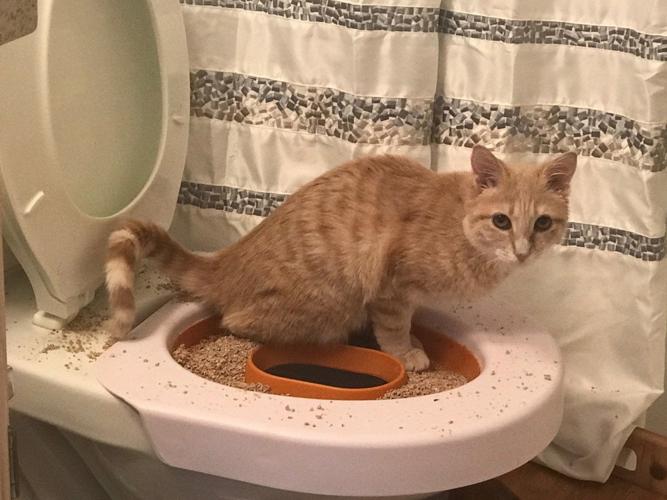Dangers of Flushing Cat Poop Down Your Toilet - Avoid Potential Issues
Dangers of Flushing Cat Poop Down Your Toilet - Avoid Potential Issues
Blog Article
Everybody maintains their own individual opinion when it comes to Can You Flush Cat Poo or Litter Down the Toilet?.

Intro
As cat proprietors, it's important to be mindful of how we dispose of our feline friends' waste. While it might seem hassle-free to flush feline poop down the toilet, this practice can have destructive effects for both the environment and human health and wellness.
Environmental Impact
Flushing cat poop presents unsafe virus and bloodsuckers into the water system, posing a considerable danger to marine ecological communities. These contaminants can adversely impact aquatic life and concession water quality.
Health Risks
Along with environmental concerns, flushing feline waste can additionally pose wellness dangers to people. Feline feces may contain Toxoplasma gondii, a bloodsucker that can cause toxoplasmosis-- a possibly extreme disease, particularly for expectant women and individuals with damaged immune systems.
Alternatives to Flushing
The good news is, there are much safer and a lot more responsible methods to dispose of cat poop. Take into consideration the complying with choices:
1. Scoop and Dispose in Trash
The most common method of dealing with cat poop is to scoop it into a naturally degradable bag and toss it in the garbage. Be sure to use a devoted trash inside story and throw away the waste promptly.
2. Usage Biodegradable Litter
Opt for biodegradable pet cat litter made from products such as corn or wheat. These trashes are environmentally friendly and can be securely disposed of in the trash.
3. Hide in the Yard
If you have a yard, think about hiding cat waste in a designated location far from veggie gardens and water sources. Make certain to dig deep enough to stop contamination of groundwater.
4. Set Up a Pet Waste Disposal System
Invest in a pet dog waste disposal system especially designed for feline waste. These systems use enzymes to break down the waste, minimizing odor and environmental influence.
Final thought
Accountable pet possession extends past offering food and sanctuary-- it also involves appropriate waste management. By refraining from purging pet cat poop down the bathroom and opting for different disposal approaches, we can reduce our environmental impact and shield human wellness.
Why Can’t I Flush Cat Poop?
It Spreads a Parasite
Cats are frequently infected with a parasite called toxoplasma gondii. The parasite causes an infection called toxoplasmosis. It is usually harmless to cats. The parasite only uses cat poop as a host for its eggs. Otherwise, the cat’s immune system usually keeps the infection at low enough levels to maintain its own health. But it does not stop the develop of eggs. These eggs are tiny and surprisingly tough. They may survive for a year before they begin to grow. But that’s the problem.
Our wastewater system is not designed to deal with toxoplasmosis eggs. Instead, most eggs will flush from your toilet into sewers and wastewater management plants. After the sewage is treated for many other harmful things in it, it is typically released into local rivers, lakes, or oceans. Here, the toxoplasmosis eggs can find new hosts, including starfish, crabs, otters, and many other wildlife. For many, this is a significant risk to their health. Toxoplasmosis can also end up infecting water sources that are important for agriculture, which means our deer, pigs, and sheep can get infected too.
Is There Risk to Humans?
There can be a risk to human life from flushing cat poop down the toilet. If you do so, the parasites from your cat’s poop can end up in shellfish, game animals, or livestock. If this meat is then served raw or undercooked, the people who eat it can get sick.
In fact, according to the CDC, 40 million people in the United States are infected with toxoplasma gondii. They get it from exposure to infected seafood, or from some kind of cat poop contamination, like drinking from a stream that is contaminated or touching anything that has come into contact with cat poop. That includes just cleaning a cat litter box.
Most people who get infected with these parasites will not develop any symptoms. However, for pregnant women or for those with compromised immune systems, the parasite can cause severe health problems.
How to Handle Cat Poop
The best way to handle cat poop is actually to clean the box more often. The eggs that the parasite sheds will not become active until one to five days after the cat poops. That means that if you clean daily, you’re much less likely to come into direct contact with infectious eggs.
That said, always dispose of cat poop in the garbage and not down the toilet. Wash your hands before and after you clean the litter box, and bring the bag of poop right outside to your garbage bins.
https://trenchlesssolutionsusa.com/why-cant-i-flush-cat-poop/

We were introduced to that report about How to Dispose of Cat Poop and Litter Without Plastic Bags through someone on our other site. Those who liked our blog entry if you please remember to pass it around. Thanks so much for taking the time to read it.
Get Estimate Report this page